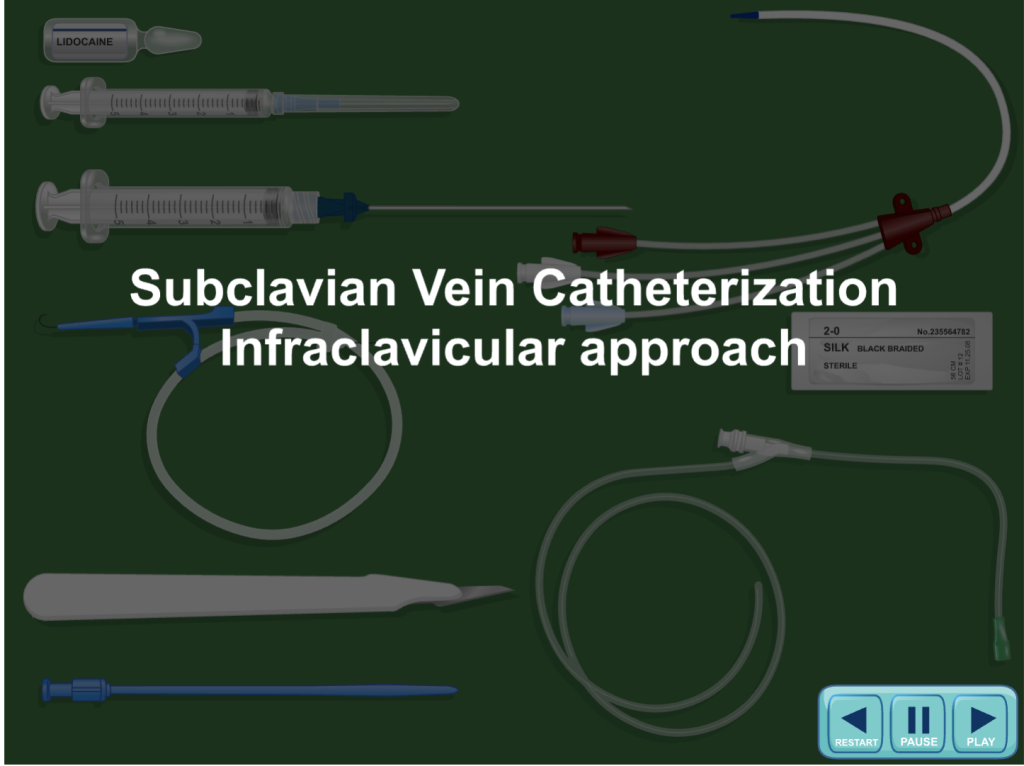Description #
There are 2 components to knowing how to perform a procedure: 1) cognitive understanding of the procedure (i.e. indications, contraindications, complications, ordered steps) and 2) the psychomotor coordination and technical skill of performing the procedure itself. The unit will be organized into phases, moving from purely cognitive to progressively more psychomotor skill acquisition.
Phase1: Pre-course reading materials to include indications, contraindications, complications, ordered steps of each procedure.
Phase 2: Computer animation sequences will demostrate the key anatomical landmarks and ordered steps for Internal Jugular Vein, Subclavian vein, and Femoral Vein Catheterization.
Phase 3: Human Patient Simulator and Simman simulation scenarios. The learner must now manage the resuscitation of a critically ill patient in parallel with clinical decision-making, team leadership, and appropriate timing of the procedure during real-time patient encounters.
Learning Objectives #
At the end of this unit, learners should be able to perform:
1. Central line placement in the Subclavian Vein, Internal Jugular Vein, and Femoral Vein using surface anatomy landmarks.
Videos #
Internal Jugular Catheterization Central Approach
Subclavian Vein Catheterization Infraclavicular Approach Video****

Femoral Vein Catheterization Video
Central Vein Catheterization Landmark Technique Lecture by :
Afshin Khazei, MD, FRCPC, ABEM, ABPM-HB, AAFP #
#
Please follow the link for the lecture slides
